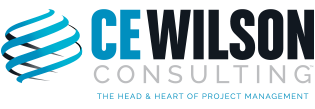Project management is more than just a beneficial skill; it’s a core competency that benefits…

What’s at Stake? How to Define and Manage Project Stakeholders
Virtually every project has stakeholders. They are people internal or external to the organization who have an interest and vested stake in the success of the project and its impact. Anyone directly or indirectly affected by a project is considered a stakeholder.
At first glance, this may seem straightforward. But oftentimes, lines can become blurred, and as a project progresses, who is and isn’t a stakeholder can become less clear. Sometimes, people who are stakeholders don’t realize they are, and people who aren’t stakeholders may insert themselves into the process out of curiosity or a desire to be involved in a high-profile project.
Here are steps you can take to determine who are the stakeholders in a project, as well as how to keep them informed from project conception to completion.
Ask Who/Why/What — Starting a project without determining the stakeholders is like planning a road trip without a map. It is vital to determine a project’s stakeholders during the project initiation phase. Start by asking who will be affected. Why are they going to care? And what is the impact of the project on them going to be? This will help determine a high-level list of all the project stakeholders. Don’t forget to include potential external stakeholders, such as vendors, regulatory bodies and customers.
Break it Down — Once you have the complete list of stakeholders, you can start grouping them into logical buckets. Think in terms of groups of people and their roles and responsibilities within the project, or how the results of the project will impact them as end users or customers. These can include (but are not limited to) those responsible for funding the project, sponsors, project advocates who will be the cheerleaders and champions of change, trainers who will educate others about the changes, and end users or customers whose day-to-day routines will change as the result of the project. Once you have your list in place, circulate it and get everyone’s buy-in to ensure no one critical to the project is left out of the loop.
 Manage Effectively — Part of the project planning process should be identifying a stakeholder management plan, which will include the means and frequency of communication with your stakeholders. Communication methods can include weekly (or even daily during crucial periods) status meetings, emails, newsletters and reports. Keep in mind that not all stakeholders will need or want the same level and frequency of information. Talk to your stakeholder groups to find out their expectations for communication, and tailor your plan accordingly.
Manage Effectively — Part of the project planning process should be identifying a stakeholder management plan, which will include the means and frequency of communication with your stakeholders. Communication methods can include weekly (or even daily during crucial periods) status meetings, emails, newsletters and reports. Keep in mind that not all stakeholders will need or want the same level and frequency of information. Talk to your stakeholder groups to find out their expectations for communication, and tailor your plan accordingly.
Filter Out the Noise — For every project there will be people who want to be in the know about what’s going on, but don’t have a defined role. It can be tempting to ignore or dismiss those voices, but doing so can push them to intervene with input that ultimately delays or derails the project. You’ll want to have a plan in place to deal with project observers. Don’t close off communication with them, rather understand their interest and motivations, and if they are truly onlookers, consider minimizing communication to just the essentials.
Be Adaptive and Responsive — Check in with your stakeholders throughout the project to get feedback on the level of detail and frequency of communication. Find out if they feel like they’re receiving too much or too little detail; ask if the updates are too often or not often enough. At the same time, make sure stakeholders are doing their part by attending meetings and providing status updates as requested.
Whether a project is large or small, managing stakeholders effectively helps ensure it will be completed successfully. As with almost all aspects of project management, good communication is key to keeping stakeholders invested, motivated and committed to a project’s success.




